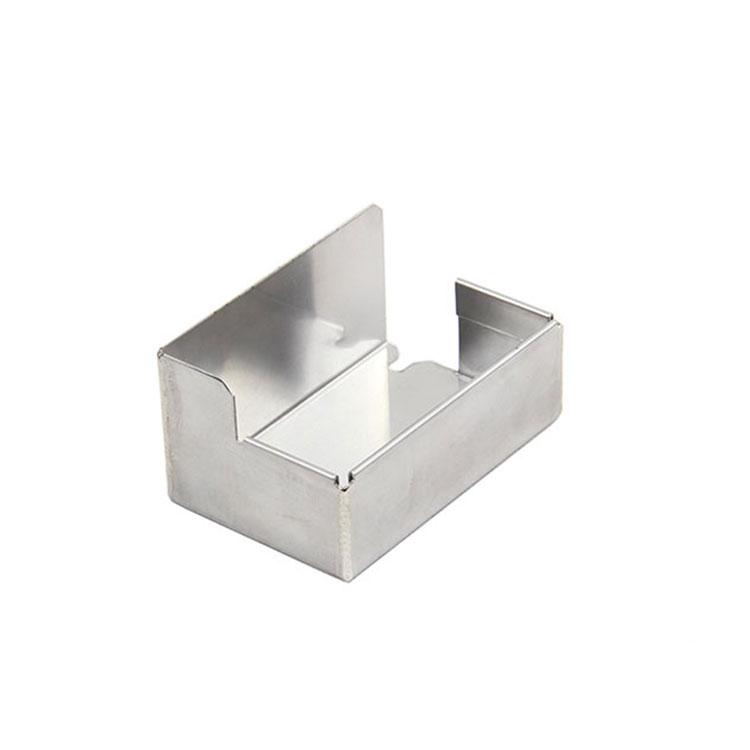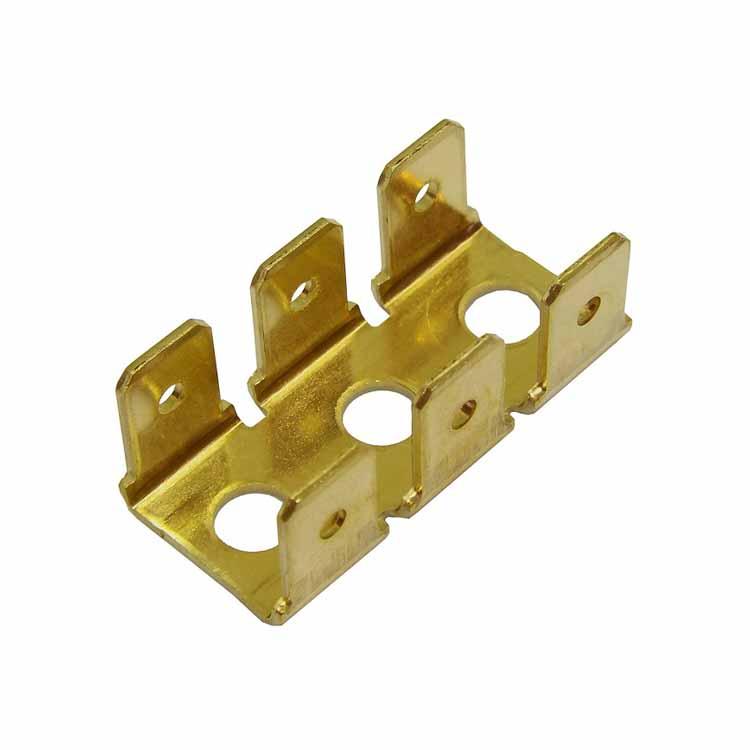The performance requirements of raw materials for metal stamping parts involve the physical properties such as material hardness, material tensile strength, and material shear strength. The stamping forming process involves stamping cutting, stamping bending, stamping stretching and other related processes.
1. Ordinary carbon steel plates such as Q195, Q235, etc
2. High quality carbon structural steel plate, with guaranteed chemical composition and mechanical properties. Among them, carbon steel is mostly used as low carbon steel. Common brands are 08, 08F, 10, 20, etc.
3. Electrical silicon steel plate, such as DT1 and DT2;
4. Stainless steel plates, such as 1Cr18Ni9Ti, 1Cr13, etc., are used to manufacture parts with anti-corrosion requirements; The material properties of stainless steel are high hardness, high strength, anti-corrosion, welding performance, antibacterial and other physical properties. During stamping production, the most appropriate material brand shall be selected according to the functional requirements of stamping parts.
SUS301: The chromium content is relatively low, and the corrosion resistance is poor. However, the material can reach high tensile strength and hardness after heat treatment, and the elasticity of the material is good.
SUS304: The carbon content, strength and hardness are lower than SUS301. However, the corrosion resistance of the material is strong. High strength and hardness can be achieved after heat treatment.
5. Common low alloy structural steel plates, such as Q345 (16Mn) Q295 (09Mn2), are used to manufacture important stampings with strength requirements;
6. Copper and copper alloys (such as brass), with grades of T1, T2, H62, H68, etc., have good plasticity, conductivity and thermal conductivity;
7. Aluminum and aluminum alloy, commonly used grades are L2, L3, LF21, LY12, etc., with good shaping, small and light deformation resistance.
8. The shape of stamping materials, the most commonly used is sheet metal, and the common specifications are 710mm × 1420mm and 1000mm × 2000mm, etc;
9. The sheet metal can be divided into A, B and C according to the thickness tolerance, and I, II and III according to the surface quality.
10. Sheet material supply status: annealed status M, quenched status C, hard status Y, semi hard status Y2, etc. The sheet has two rolling states: cold rolling and hot rolling;
11. The aluminum killed steel plate used for drawing complex parts can be divided into ZF, HF and F, and the general deep drawing low-carbon steel plate can be divided into Z, S and P.
The hot rolled steel coil after pickling is rolled at room temperature and then processed by cleaning, annealing, quenching and tempering, which is called SPCC;
SPCC materials are divided into:
SPCC: suitable for products with low degree of stamping processing, such as blanking and bending;
SPCD: Stamping parts suitable for stamping and stretching requirements and repeated stamping or high forming;
SPCE: The tensile property is higher than that of SPCD, the surface needs electroplating, and such materials are rarely used;
Cold rolled steel plate is made by degreasing, pickling, electroplating and other treatments after continuous galvanization, which is called SECC.
SECC and SPCC are also divided into SECC, SECD and SECE according to the tensile grade
The characteristic of SECC is that the material has its own zinc coating, which has good corrosion resistance and can be directly stamped into appearance parts.
Post time: Dec-02-2022


